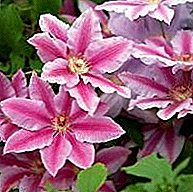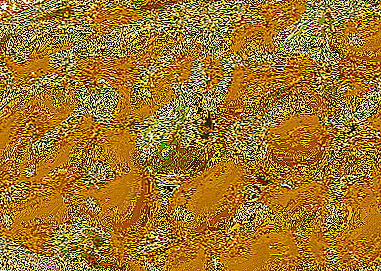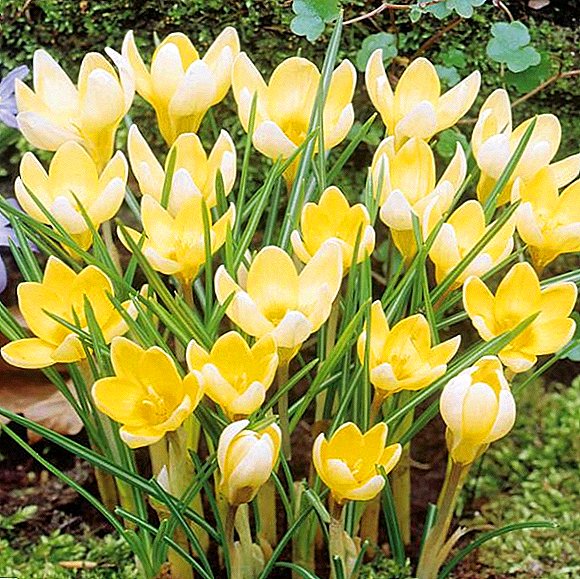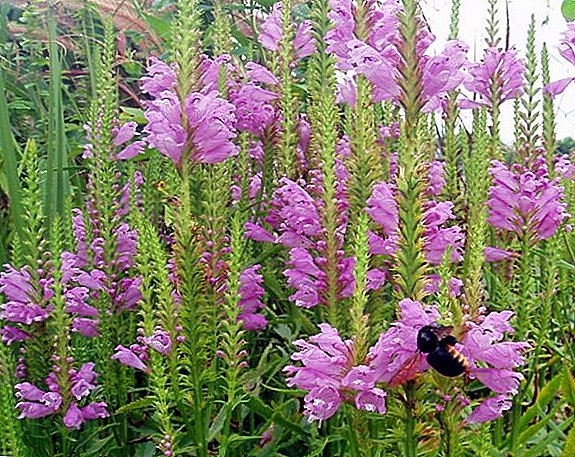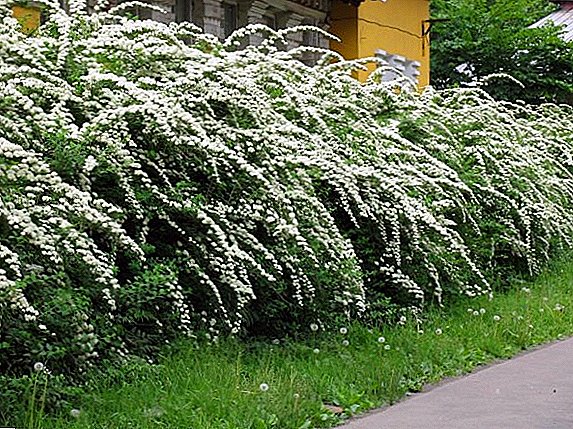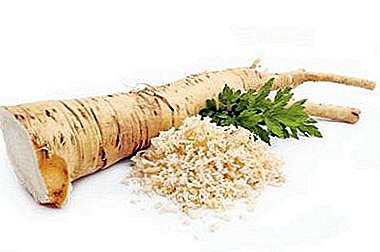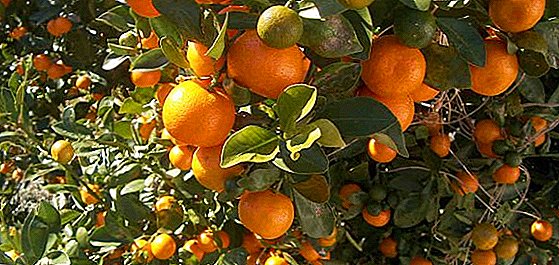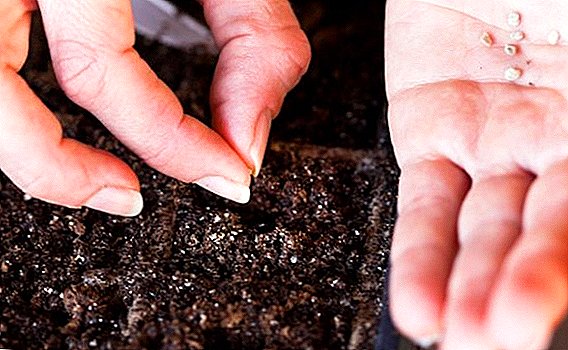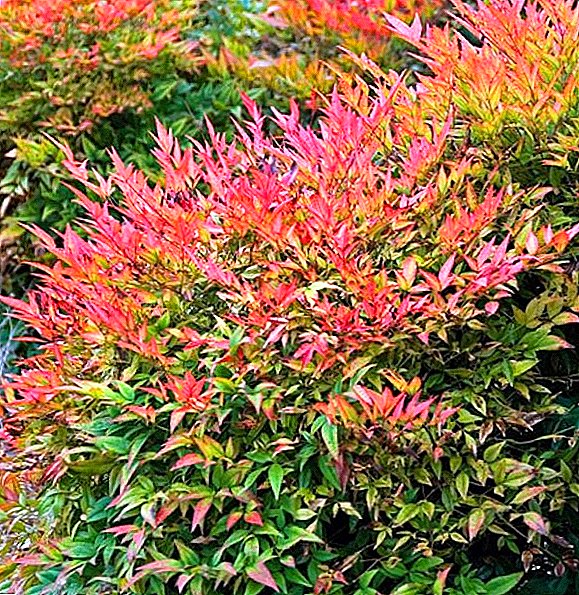 Every gardener wants to grow in his home or garden an original plant that could please the eye all year round.
Every gardener wants to grow in his home or garden an original plant that could please the eye all year round.
A perennial oriental shrub of Nandina, the embodiment of beauty and a riot of colors, is perfect for this purpose.
However, before you begin to grow it, you should remember some of the nuances relating to planting and care.
Botanical description
Nandina is a perennial evergreen tree or a lush ornamental shrub, the birthplace of which is Japan or China.
It has an open, cylindrical crown with lateral, slightly branching shoots of a light purple-violet hue, which later become simply grayish-brown. The leaves of the plant are large, complex triangular shape with a wedge-shaped base and a sharp tip, up to 40 cm in length.  Located on the petioles (10-15 cm) with a vaginal base and keel. In the summer they are painted dark green, and in the fall, with a decrease in temperature, they acquire a bright red tint.
Located on the petioles (10-15 cm) with a vaginal base and keel. In the summer they are painted dark green, and in the fall, with a decrease in temperature, they acquire a bright red tint.
The pinkish-white small flowers of the nandina are collected in inflorescences and resemble in their structure a 20-40-centimeter broom, on which sometimes appear white or reddish berries with an oblong tip.
Important! Nandin berries have an attractive appearance, but they cannot be eaten, they contain a poisonous alkaloid in their composition.
Popular varieties
Currently, breeders bred about 50 varieties of home nandin, the most popular of which are:
- "Alba" with white matt berries.

- Dwarf variety "Compacta" (no more than 70 cm).

- "Nana rurpurea" - low bush with saturated purple leaves that do not change color.

- "Harbor Dwarf" - A bush with bright red foliage.
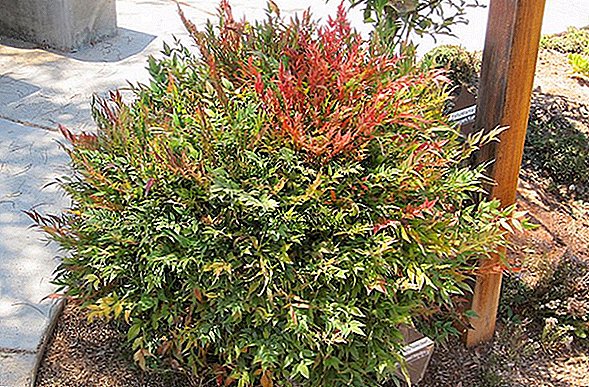
- "Strength of Fire" - dwarf shrub with fiery red leaves, suitable for bonsai creations.
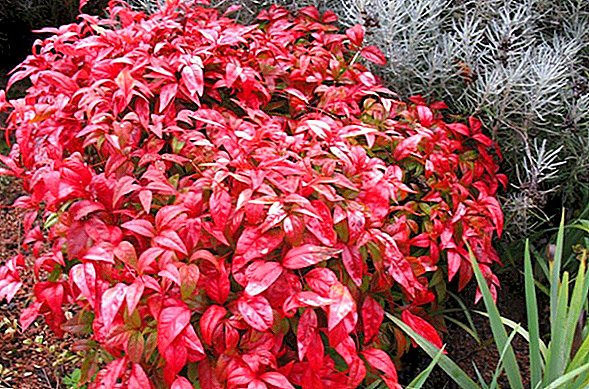
Familiarize yourself with other shrubs, such as chamelacium, needle, tabernemontana, silverweed, boxwood, Brugmansia, ryblennik, heather, skoumpia, curly honeysuckle, coronet crown.
Choosing a place in the garden
A bright and changeable nandina is capricious and requires a special care plant, therefore the choice of a place for its cultivation in the garden, the composition of the soil and the lighting should be carefully selected.
Lighting and shadow
This rare shrub feels great in a brightly lit area, but does not tolerate direct sunlight, so the area with diffused light would be the best option for nandin. 
Growing soil
A loose and waterproof soil with moderate acidity (pH 3.5-6.4) is suitable for growing an oriental plant.
The soil mixture must consist of such ingredients:
- 1 piece of leafy ground;
- 1 part turf soil;
- 1 part peat;
- 1/2 of coarse sand.
Did you know? The botanical name of the house nandina comes from the Chinese "Nanteen" (southern heaven), and the added word "domeslica" is associated with growing bushes near the house to attract good gods - hence the second name "sacred bamboo".
Planting and breeding
Reproduction of the nandina occurs in two ways: cuttings and seeds. 
Cuttings
The cutting is carried out in the following way:
- Cuttings are selected 8 cm long, sand and peat mixture and special capacity for upsetting.
- For better rooting, the cuttings are kept for 12 hours in advance in the solution of "Heteroauxin".
- Before rooting, 2 lower leaves are removed.
- The cut is processed by the root.
- The container with the planted cutting is transferred to a warm place (air temperature from 12 to 20 ° C).
Seeds
For proper breeding, flower seeds are planted in special garden containers to a depth of about 2 centimeters and moved to a home-made greenhouse with a maintained air temperature from +20 to +22 ° C.
When the first shoots appear, the containers should be transferred to a well-lit place, and in 3-4 weeks they should be fed with complex fertilizer. 
How to care for a flower
To care for the shrub of the nandina is quite troublesome, but if you put your efforts and soul into this process, the result will exceed all your expectations.
Watering
In the warm season, watering should be abundant and carried out regularly. Water for manipulation must necessarily be soft and separated.
Important! Do not allow the soil to dry out, it can lead to a complete fall of the leaves.In the cold period, moisture should be reduced, occasionally wetting the ground to prevent drying.
Fertilizer
To feed a plant is necessary both in a warm, and in a cold season. From April to December - once in 2 weeks, in the cold - once a month. Fertilizers must be complex, liquid, mineral or organic. 
Transfer
Young nandin (up to two years) are transplanted, as a rule, in the spring on an annual basis, and one transplant with an interval of 3-4 years is enough for mature plants. When performing this procedure, the roots of the shrub (of any age) must be pruned.
Pruning
It is not necessary to trim the shrub of the nandina, as it does not branch, pinching the tops of the stems is also useless - manipulation does not stimulate the growth of side branches. However, if you wish, you can give a bush tree-like, if you cut off all the root shoots.
Difficulties and possible diseases
Even with the most careful care, the plant can suffer from some diseases that need to be identified with the very first symptoms:
- Spider mite - Nandin foliage turns yellow, a thin white web appears on the lower shoots. It is necessary to remove the affected leaves, and the plant is completely sprayed with water. If the defeat is strong, nandin should be treated with "Aktellik".

- Aphid - causes twisting and discoloration of leaves. Soot fungus can settle on the secretions of these insects. To get rid of the pest, it is necessary to treat the shrub with soapy water or "Aktellik" (depending on the degree of infection).

- Shchitovka - provokes the appearance of brown plaques on the leaves and shoots, in a short time the leaves turn yellow and fall off. To eliminate dilute the soap solution and, wetting it with a soft cloth, gently wipe the affected leaves. With a strong infection, the foliage needs to be treated with Decis.

Did you know? Decorative culture of Nandina was bred by the Nikitsky Botanical Garden in 1846. To date, successfully bred in the Caucasus, the Crimea and in subtropical regions of Russia.
Nandina grown in its own garden will be one of the main eye ornaments; the oriental beauty will harmonize perfectly with ferns, juniper, barberry, viburnum and spirea.










